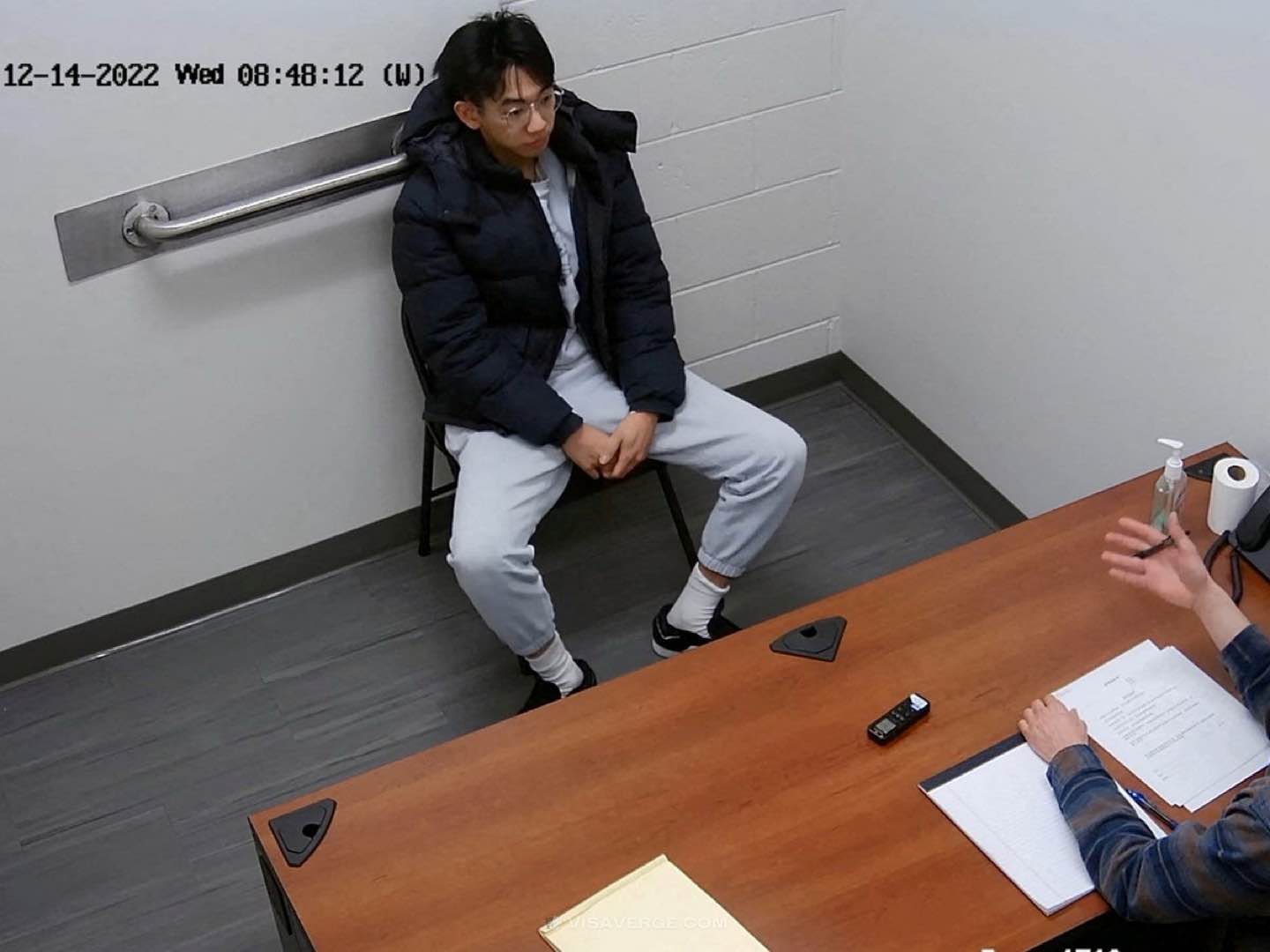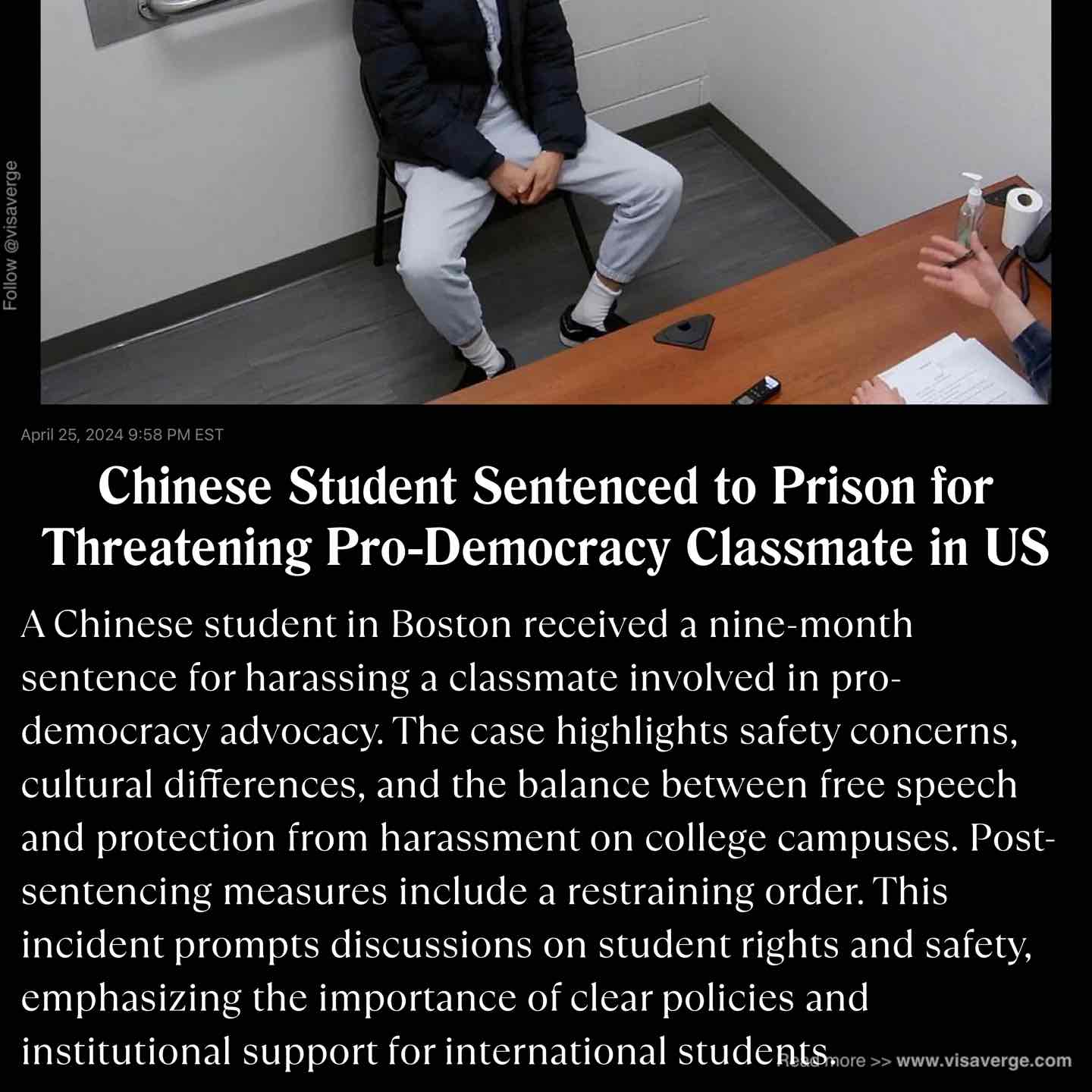What Led to the Sentencing of a Chinese Student in Boston?
In a recent significant legal conclusion, a 23-year-old male student from China at a Boston university has been sentenced to nine months in prison. This sentence came after he was found guilty of threatening and harassing a classmate who was actively involved in pro-democracy movements. The issue not only raises questions about the reach of free speech but also touches on the complex dynamics of international student relations in the United States.

The case, as reported by the South China Morning Post, began when the victim, a fellow classmate known for their pro-democracy stance, reported receiving multiple threatening messages and experiencing aggressive behaviors. These incidents accumulated to a point where physical confrontation took place, compelling the victim to turn to university authorities and law enforcement for help.
How Did the Harassment Affect the Victim?
According to the details disclosed during the trial, the harassment had a severe impact on the victim’s daily life and activism. In a distressing testimony, the victim shared, “I was constantly looking over my shoulder, unsure of what would happen next.” This statement encapsulates the mental and emotional toll that the prolonged intimidation had on them, highlighting a serious concern about student safety on campus.
What Was the Argument in Defense of the Accused?
The defense brought up cultural differences and the current tense political climate between the US and China as possible influences on the defendant’s actions. They hinted that these factors might have contributed to the misunderstanding and subsequent behaviors of the accused. However, this argument was dismissed by the court. The judge clarified, “This case is not about politics or cultural misunderstandings. It’s about the right of every student to feel safe and supported in their educational environment, free from threats and harassment.”
What Measures Are Being Taken Post-Sentencing?
Following the sentence, which includes the nine months of imprisonment and a subsequent period of supervised release, a restraining order has been issued preventing any future contact between the perpetrator and the victim. This movement showcases the court’s determination to uphold a safe educational space for all students. Meanwhile, the university reiterated its commitment to ensuring an inclusive environment for all students, although specifics of policy revisions remain under review.
What Does This Case Tell Us About Free Speech and Safety on Campus?
This legal outcome triggers broader discussions on college campuses nationwide about the balance between free speech and the necessary protections against harassment. Especially concerning international students, it reflects on how educational institutions manage and integrate diverse international perspectives within their academic and social frameworks.
Furthermore, these incidents underscore the need for clear policies that both defend the principles of free speech and effectively protect individuals from targeted harassment. For international students away from their home countries, understanding their rights and the legal protections available to them is crucial. Institutions play a pivotal role in ensuring these protections are not only in place but are also actively enforced.
For more information on student rights and safety measures, potential international students and concerned parties can visit the official U.S. Department of State’s Bureau of Educational and Cultural Affairs website, which offers resources and guidelines pertaining to international studies in the U.S.
Conclusion
The sentencing of the Chinese student in Boston serves as a poignant reminder of the ongoing challenges within international student relations and the imperative need for universities to foster environments where all voices can be heard and respected safely. As this case concludes, it leaves behind integral questions about cultural integration, political expression, and the role of educational institutions in navigating these complex waters while securing the welfare of their students.
Learn Today:
- International Student: A student who is a citizen of a country other than the one where they are studying. International students often face unique challenges related to immigration laws, cultural differences, and academic adjustments when pursuing education abroad.
- Supervised Release: A period of post-incarceration supervision during which an individual must adhere to specific conditions set by the court. This can include regular check-ins with a parole officer, adherence to curfews, and prohibitions on contacting certain individuals, as seen in the case of the sentenced Chinese student.
-
Restraining Order: A legal order issued by a court that prohibits an individual from contacting or being in close proximity to a specific person. In cases involving harassment or threats, a restraining order aims to protect the victim from further harm by legally mandating distance between them and the perpetrator.
-
Free Speech: The right to express opinions and ideas without government interference or censorship. In the context of the case discussed, the tensions between free speech and harassment highlight the complexity of balancing individuals’ rights to voice their opinions with the need to ensure safety and security for all members of the educational community.
-
Educational Environment: The collective physical, social, and emotional context in which learning and academic activities take place. Ensuring a safe and inclusive educational environment is crucial for students to thrive academically, socially, and emotionally, emphasizing the importance of institutions’ responsibilities in safeguarding student welfare.
This Article In A Nutshell:
A Chinese student in Boston received a nine-month prison sentence for harassing a classmate involved in pro-democracy activities. The case highlights tensions facing international students in the U.S. amidst political differences. The ruling reinforces the necessity of safeguarding student safety on campuses and respecting diverse perspectives while upholding freedom of speech.
— By VisaVerge.com
Read More:
- Boosting Ties: 50,000 Students to Journey Between the U.S. and China for Education
-
Tragic News: Chinese Student Found Dead Near Maine College Campus
-
China’s Immigration Platform Reaches 10 Million Calls: A Milestone Achievement
-
Understanding the Decline of Americans Studying in China: Challenges and Initiatives
-
Visa-Free Policy Success: China’s Strategy to Attract More Foreign Visitors














